Breeding methods and matters needing attention of elegant Music Dance
Ya Le Dance prefers a sunny, warm, dry and well-ventilated environment. Resistant to drought, avoid dampness and cold. Although it can grow normally under the condition of semi-shade and scattered light, the color of the brocade on the leaves will decrease, and the distance between stem nodes will be lengthened, making the plant loose and not compact, affecting ornamental. Today, the editor will briefly introduce how to raise the dance of elegant music.
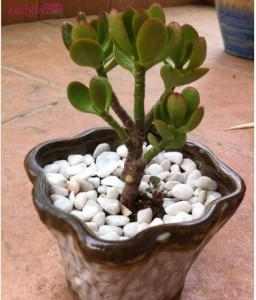
Reproduction method
The propagation of elegant music dance is often done by cutting or grafting. Cuttings are generally carried out in the growing season, cuttings can be pruned during shaping, the length requirements are not strict, but there must be at least 3 to 4 pairs of leaves. Remove the lower leaves before insertion and let them dry for 1 to 2 days. after the wound is dry, insert it into the culture soil and place it in a place without direct sunlight to keep the soil slightly moist. It can take root in 2 to 3 weeks. The seedlings survive and apply thin fertilizer to make them grow vigorously, and when the plants grow to a certain size, they can be modeled. Grafting is also carried out in the growing season, and the rootstock is grafted with the original purslane tree of elegant music dance, which is grafted by split grafting.
Bonsai production
The modeling of elegant music dance bonsai can be carried out by the combination of flat binding and pruning, and the common forms are straight dry type, qu dry type, oblique dry type, cliff type, water-facing type and so on. As it is a fleshy stem, do not strangle the wire into its epidermis when banding, otherwise it will cause succulent stem tearing. Its branches are sparse, the long branches are slightly drooping, and the crown is mostly natural, chic and elegant, sparse and appropriate, and has its own characteristics. Can also make use of the characteristics of its small and dense leaves, often prune, promote branchlets, and cultivate the crown into a compact triangle or steamed bread shape. For the elegant music dance that cuttings survive, you can add a little banding, pruning, planting in a small basin and matching with strange stones to become exquisite, lovely, exquisite and chic miniature bonsai.
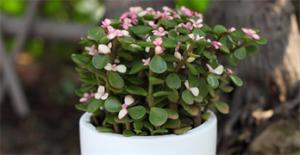
Management and maintenance
Usually water master "do not dry do not water, water is thoroughly", avoid basin soil stagnant water, also do not want long-term rain, lest cause rotten root. Pay attention to good ventilation during high temperature in summer to prevent fallen leaves and rotten roots caused by muggy heat and humidity. During the growing period, mature thin liquid fertilizer or compound fertilizer should be applied every 20 days or so. After fertilization, attention should be paid to loosening the soil in order to increase the air permeability of the soil and facilitate the absorption of roots. Cut off the branches that affect the shape of the tree at any time during the growing period (the cut branches can be used as materials for cutting or grafting), and the grafted plants erase the germinated branches and leaves on the rootstock in time. In winter, move to the indoor sunny place for maintenance, control watering, about 10 ℃ can survive the winter safely. The plastic surgery is carried out every spring to cut off the branches that affect the posture of the tree, cut the overlong branches short, promote the robust new branches, and make the bonsai beautiful. The basin is turned once in the spring of 1 to 2 years, when the rotten roots are cut off and planted with newly cultivated soil, the basin soil should be sandy soil with loose and fertile, good drainage and air permeability.
Except for a little shade in high temperatures in summer, other seasons should be exposed to as much sunlight as possible. In summer, ventilation should be strengthened to avoid muggy and humid environment, otherwise the leaves will fall due to root rot. In the peak growing season of spring and autumn, mature thin liquid fertilizer or compound fertilizer is applied every half a month. Pay attention to the nitrogen fertilizer content in fertilizer and water should not be too much, lest the leaves have too much green, can not highlight the characteristics of the variety. Usually watering master "dry through" to avoid long-term stagnant water in the basin soil. Keep the basin soil dry in winter and survive the winter safely in about 5 ℃. Due to the rapid growth of this species, it is necessary to often trim and remove redundant branches in order to maintain the beauty of the plant shape. According to the growth situation, the basin is turned once every spring, the basin soil is required to be loose, fertile, and has good drainage and air permeability. 2 parts of rotten leaf soil, 2 parts of coarse sand, vermiculite or perlite, 1 part of garden soil, mixed with a small amount of plant ash or bone powder as base fertilizer, mixed and used.
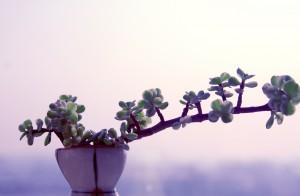
-
Knowledge of flower cultivation
Wechat: yanghua29
Flower cultivation knowledge, ask and answer, solve the problem of flower cultivation!
- Prev
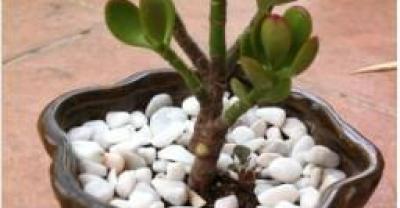
Lobster culture, complete collection of aquatic plants, and pictures of all kinds of aquatic plants are attached for identification by breeding friends.
In the process of lobster culture, the selection and maintenance of aquatic plants is still a relatively important link. Today, I will give you a brief introduction to the process of lobster culture.
- Next
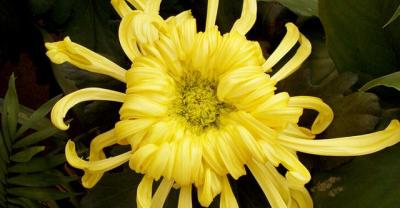
2016 what is the most profitable breed for farming?
The countryside is a huge market, here you can play, as long as you have the ability to dig your own first bucket of gold, this is now more and more.
Related
- On the eggshell is a badge full of pride. British Poultry Egg Market and Consumer observation
- British study: 72% of Britons are willing to buy native eggs raised by insects
- Guidelines for friendly egg production revised the increase of space in chicken sheds can not be forced to change feathers and lay eggs.
- Risk of delay in customs clearance Australia suspends lobster exports to China
- Pig semen-the Vector of virus Transmission (4)
- Pig semen-the Vector of virus Transmission (3)
- Five common causes of difficult control of classical swine fever in clinic and their countermeasures
- Foot-and-mouth disease is the most effective way to prevent it!
- PED is the number one killer of piglets and has to be guarded against in autumn and winter.
- What is "yellow fat pig"? Have you ever heard the pig collector talk about "yellow fat pig"?

